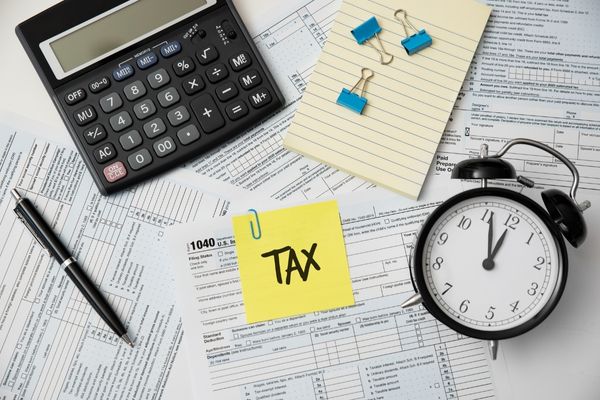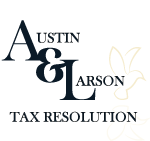A tax levy on a paycheck, also called wage garnishment, is a legal collection action where the IRS seizes a portion of your earnings directly from your employer to satisfy unpaid tax debt. If you’re facing this situation, professional tax resolution services can help you navigate your options and protect your income. Once the IRS issues a wage levy, your employer must withhold a specific amount from each paycheck and send it directly to the IRS until your tax debt is resolved.
Key Takeaways:
- 30-Day Warning Required: The IRS must send a “Final Notice of Intent to Levy” at least 30 days before garnishing wages, giving you time to respond or negotiate
- Ongoing Deduction: Unlike one-time bank levies, wage garnishment continues with every paycheck until your debt is paid or you arrange an alternative solution
- Limited Take-Home Pay: The IRS leaves you only a basic living allowance based on your filing status, dependents, and pay frequency, often much less than you need
- Bonuses Fully Seized: The IRS can claim 100% of bonuses and commissions separately from your regular wages with no additional exemptions
- Immediate Action Stops It: Contact the IRS to set up a payment plan, request Currently Not Collectible status, or apply for an Offer in Compromise to release the levy
- Employer Must Comply: Your employer is legally required to withhold funds once they receive the levy notice, they cannot refuse
The IRS must follow specific legal steps before garnishing wages. This gives you time to respond, set up a payment plan, or negotiate alternatives. The amount withheld depends on your filing status, pay frequency, and number of dependents, leaving you only enough for essential expenses.
This guide explains the complete wage levy process, your protected rights, and proven strategies to stop or prevent IRS wage garnishment before it impacts your financial stability.

Understanding Wage Garnishment Through Tax Levies
Many taxpayers discover their wages are at risk only after deductions start appearing. Unpaid tax debt gives the IRS legal authority to collect directly from your income. This enforcement action catches countless people unprepared each year.
Taking control of this situation requires understanding the process and your available options. Quick action can prevent further financial hardship. This guide explains everything you need to know about protecting your paycheck.
This article covers the essential steps the IRS takes before starting wage collection. You will understand how much money can be withheld from your earnings. We also outline proven strategies to stop or reverse this enforcement action. Whether you recently received a notice or already face reduced paychecks, qualified tax professionals can provide solutions. Acting promptly gives you the best chance to protect your income.
Key Differences Between Levies and Garnishments
When facing tax debt or other financial obligations, you may encounter two common collection methods: levies and garnishments. While these terms are often used interchangeably, they represent distinct legal actions with different implications for your finances. A levy allows creditors to seize assets like bank accounts or property, while a garnishment typically involves deducting money directly from your wages or income. Understanding the key differences between these two collection methods is essential for protecting your financial interests and knowing your rights when dealing with debt collection.
Understanding Tax Levies
A tax levy represents the government’s legal power to seize assets for unpaid taxes. This enforcement tool allows collection from multiple sources including bank accounts and vehicles. Your wages can also become a target for levy action. According to the U.S. Department of Treasury, the IRS typically sends multiple notices before taking this serious step. Ignoring these warnings leads to forced collection of what you owe. Once a levy takes effect, it remains in place until your tax debt is fully satisfied or alternative payment arrangements are established. Understanding your rights and available resolution options can help you avoid this aggressive collection action.
How Wage Garnishment Works
Wage garnishment serves as one specific type of tax levy action. The IRS notifies your employer to withhold a portion of each paycheck. Your full earnings no longer reach you directly under this arrangement. Instead, the withheld amount transfers straight to the IRS automatically. The garnishment amount depends on your filing status and number of dependents, leaving you with only a basic living allowance that the IRS determines is necessary for minimal expenses. State tax agencies can also garnish wages, though federal powers remain stronger. This process continues until your debt is fully satisfied or you negotiate another solution. Employers must comply with the garnishment order immediately, and failure to respond to IRS notices beforehand can result in this aggressive collection action without further warning.
Scope of Assets
- A levy can target various property types including accounts, vehicles, and income. This broad reach gives tax authorities the flexibility to pursue almost any asset you own to satisfy the debt.
- Garnishment typically focuses only on monetary assets like wages and payments, making it more limited in scope but equally effective for recovering debts from regular income sources.
Collection Method
- Levies allow direct seizure of assets without requiring a third party. The IRS or creditor can independently access and take possession of your property once legal requirements are met.
- Garnishment always requires a third party such as your employer to redirect funds, creating an additional layer in the collection process that involves notification and cooperation from the intermediary.
Timing and Frequency
- Levies can freeze or seize assets in a single action. This one-time seizure often resolves the debt immediately if sufficient assets are available.
- Garnishment takes regular portions from each paycheck until debt resolution, which means the collection process continues over an extended period and provides ongoing impact to your income stream.
Understanding these differences helps you recognize the enforcement action you face. Each type requires specific strategies to resolve effectively. Knowing which applies to your situation guides your next steps. Professional guidance can clarify your options and help you respond appropriately.

Understanding Tax Levy Wage Garnishments
A tax levy allows the IRS to collect unpaid taxes directly from your paycheck. Your employer receives official notice requiring them to withhold a portion of your wages. This garnishment continues until your tax debt is fully resolved or alternative arrangements are made. Employers must comply with tax levy orders by law.
The amount you keep depends on several key factors. Your filing status plays a major role in determining exempt income. Payment frequency affects how calculations are processed each pay period.
Factors That Determine Your Protected Income
- These elements influence how much remains exempt from garnishment:
- Your current tax filing status affects baseline exemptions
- Pay schedule frequency determines calculation methods
- Number of dependents you claim increases protected amounts
- Age consideration if you are 65 or older
- Vision impairment status provides additional exemptions
Standard IRS tables outline specific exempt amounts based on these factors. Understanding these variables helps you estimate your take-home pay during garnishment. Tax compliance specialists can review your specific situation to calculate exact amounts.
How Additional Income Gets Treated
Bonuses face different rules under tax levy regulations. The IRS can claim your entire bonus payment separately from regular wages. Your standard paycheck already includes your allowed exempt amount for that period. This means bonus income receives no additional protection from garnishment.
Commission payments follow the same treatment as bonus income. The tax authority has the legal right to collect these supplemental earnings. According to federal tax collection laws, this provision exists to maximize debt recovery.
Taking Action Against Wage Garnishment
You have options to address an active tax levy situation. Contact the IRS immediately to discuss payment alternatives or hardship status. Professional tax resolution services can negotiate on your behalf for better terms. The IRS offers installment agreements and offers in compromise that may reduce your total tax debt or spread payments over manageable timeframes. Quick action prevents prolonged financial strain from ongoing wage garnishment. Ignoring a levy can result in additional penalties, interest accumulation, and potential liens on your property or assets.

How to Qualify for a Tax Levy
Most taxpayers can prevent a tax levy by taking prompt action. The key is responding quickly to IRS communications. Never ignore official tax notices from the IRS. Early intervention can stop the levy process before it begins. Seeking professional guidance immediately protects your financial stability.
Legal Requirements Before Wage Garnishment
The IRS must follow specific legal steps before implementing a tax levy. Understanding these requirements helps you recognize when action is urgent. Here’s what must happen first:
The IRS assesses your tax debt and issues a payment demand notice. You ignore the notices and fail to pay the outstanding balance. The agency sends a “Final Notice of Intent to Levy” at least 30 days before garnishment. This final notice includes information about your hearing rights. These procedural safeguards exist to protect taxpayer rights according to the Taxpayer Advocate Service.
Understanding IRS Notice Sequences
The IRS follows a progressive notice system before enforcing a tax levy. Each notice escalates in urgency and consequences. Recognizing these communications helps you respond appropriately.
Common IRS Notices:
- CP14 – Your initial bill showing the exact amount owed
- CP504 – Warning that property seizure may occur without payment
- LT11 or Letter 1058 – Final notice requiring response within 30 days
After the final notice period expires, wage garnishment can begin. The 30-day window is your last opportunity to resolve the debt. Taking action during this timeframe prevents financial hardship. Expert tax assistance during this period yields the best outcomes.
Exceptions to Standard Levy Procedures
Certain situations allow the IRS to bypass normal procedures. The agency can act faster when tax collection appears at risk. Understanding these exceptions prevents unwelcome surprises.
Federal contractors with tax debt face different rules and timelines. Disqualified Employment Tax Levy cases proceed without pre-levy hearings. These special circumstances demand immediate professional intervention. The standard 30-day notice period may not apply. Knowing your specific situation helps you prepare an appropriate response.

Understanding What the IRS Can Take Through a Tax Levy
The IRS holds significant authority when enforcing a tax levy against taxpayers. However, federal law places specific limitations on what they can seize. A tax levy represents one of the most aggressive collection tools available to the agency. Understanding these powers helps taxpayers prepare and protect their assets when facing tax debt.
The IRS can legally levy various income sources and assets. Your wages, salaries, and commissions fall under their collection authority. They can seize dividends, bank accounts, and retirement funds. Your property, including vehicles and real estate, can also be targeted. Federal payments like contractor fees and retirement benefits are not exempt from collection. Joint bank accounts where you hold partial ownership can be levied as well. Promissory notes and other payment agreements you hold may also be seized. This broad authority makes addressing tax debt quickly essential for financial protection.
Property Protected From Tax Levy
Federal law protects certain income sources and property from IRS collection actions. These protections exist to ensure basic living standards for taxpayers. According to legal resources, the following items cannot be seized through a tax levy:
- Social Security Disability Insurance payments
- Unemployment compensation benefits
- Certain public assistance program payments
- Workers compensation benefits
- Specific annuity and pension distributions
- Court-ordered child support obligations
- Job training assistance payments under federal programs
Personal property also receives limited protection from levy actions. Schoolbooks and necessary clothing cannot be taken by the IRS. Basic household items like furniture and books have protected minimums. Tools and equipment essential for your trade or profession receive partial exemption. A specific amount of fuel necessary for daily living is also protected. These exemptions help ensure you can maintain basic living conditions while resolving tax debt.
Taking Action to Stop Wage Garnishment
Preventing a tax levy starts with filing accurate returns and paying taxes on time. Staying current with the IRS eliminates the risk of collection actions entirely. Proactive communication with the agency prevents escalation to levy status. When you cannot pay your full tax bill, immediate action becomes critical.
Multiple resolution options exist for taxpayers facing collection. Payment plans allow you to satisfy debt through manageable monthly installments. Penalty abatement can reduce your total balance in qualifying situations. An Offer in Compromise may settle your debt for less than owed. Currently Not Collectible status temporarily suspends collection when you face financial hardship. Whether you’re self-employed or run a business, tax professionals can evaluate which option fits your specific financial circumstances best.
Ignoring IRS notices creates serious consequences for your financial stability. The agency will escalate collection efforts without response from you. Even after wage garnishment begins, you can still stop the process. Taking action at any stage protects more of your income and assets.
Steps to Release an Active Tax Levy
Contact the IRS directly to discuss resolution options for your tax debt. Documentation of your financial situation helps establish appropriate payment arrangements. The Federal Trade Commission recommends demonstrating inability to pay, which may qualify you for alternative collection options. The IRS must release a levy if it creates immediate economic hardship.
Setting up a formal payment agreement typically stops wage garnishment immediately. You must remain compliant with all filing and payment requirements going forward. If you’re considering more serious options, understanding bankruptcy and tax debt forgiveness or need audit representation can be crucial. Quick response to levy notices prevents prolonged financial disruption and additional penalties.
Conclusion
IRS wage garnishment represents a serious collection action that can significantly impact your financial stability. Understanding the legal requirements, protected income thresholds, and available resolution options empowers you to respond effectively. According to the U.S. Tax Court, the IRS must follow specific procedures before garnishing wages, providing you with critical opportunities to prevent or stop this enforcement action.
Taking immediate action when you receive IRS notices is essential. Whether you arrange a payment plan, request Currently Not Collectible status, or negotiate an Offer in Compromise, multiple solutions exist to protect your income. Financial education resources from organizations like the National Endowment for Financial Education emphasize that even after garnishment begins, you can still release the levy by addressing your tax debt directly with the IRS.
Don’t let unpaid tax debt escalate to wage garnishment. Contact the IRS promptly to discuss payment alternatives that fit your financial situation. If you’re dealing with state tax issues, a Michigan state tax attorney can help you navigate both state and federal obligations. The U.S. Chamber of Commerce recommends that business owners facing tax challenges seek professional tax assistance to help navigate the resolution process and negotiate favorable terms that stop collection actions while resolving your outstanding balance.
FAQs
How much of my paycheck can the IRS take through wage garnishment?
The IRS determines your exempt income based on filing status, pay frequency, and number of dependents, leaving you only a basic living allowance. This is often significantly less than you need for regular expenses. Bonuses and commissions can be seized at 100% with no additional exemptions beyond your regular paycheck protection.
Can I stop an IRS wage levy once it starts?
Yes, you can stop wage garnishment by contacting the IRS to set up a payment plan, request Currently Not Collectible status, or apply for an Offer in Compromise. Once you establish an approved arrangement, the IRS typically releases the levy immediately.
How long does IRS wage garnishment last?
Wage garnishment continues with every paycheck until your tax debt is fully paid or you arrange an alternative solution. Unlike one-time bank levies, it’s ongoing and automatic until your employer receives a release notice from the IRS.
Does the IRS notify me before garnishing my wages?
Yes, the IRS must send a “Final Notice of Intent to Levy” at least 30 days before garnishing wages. You receive multiple collection notices beforehand, giving you time to respond. Exceptions exist for federal contractors and certain employment tax cases.
Can my employer refuse to comply with an IRS wage levy?
No, your employer is legally required to comply once they receive the levy notice. They must begin withholding funds immediately and cannot refuse this legal obligation. The levy remains in effect until the IRS sends an official release notice.


Recent Comments